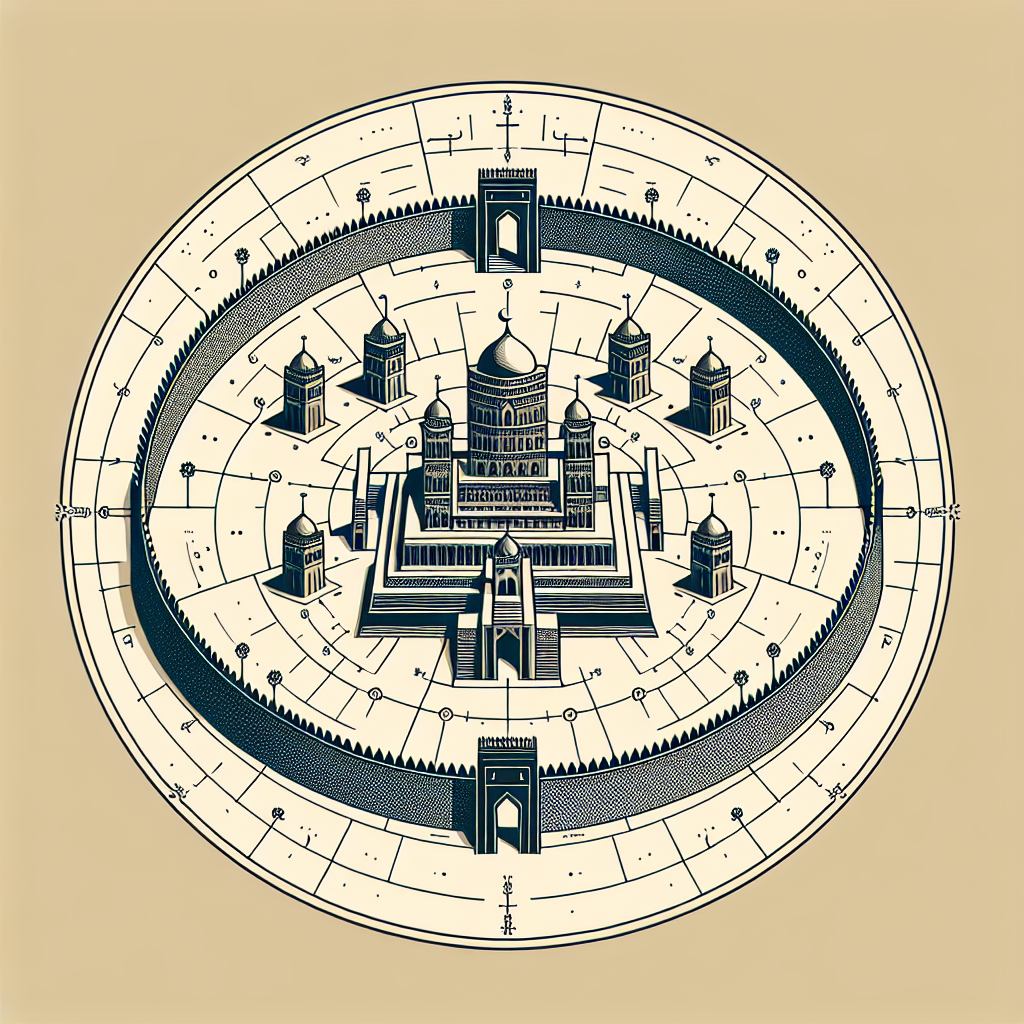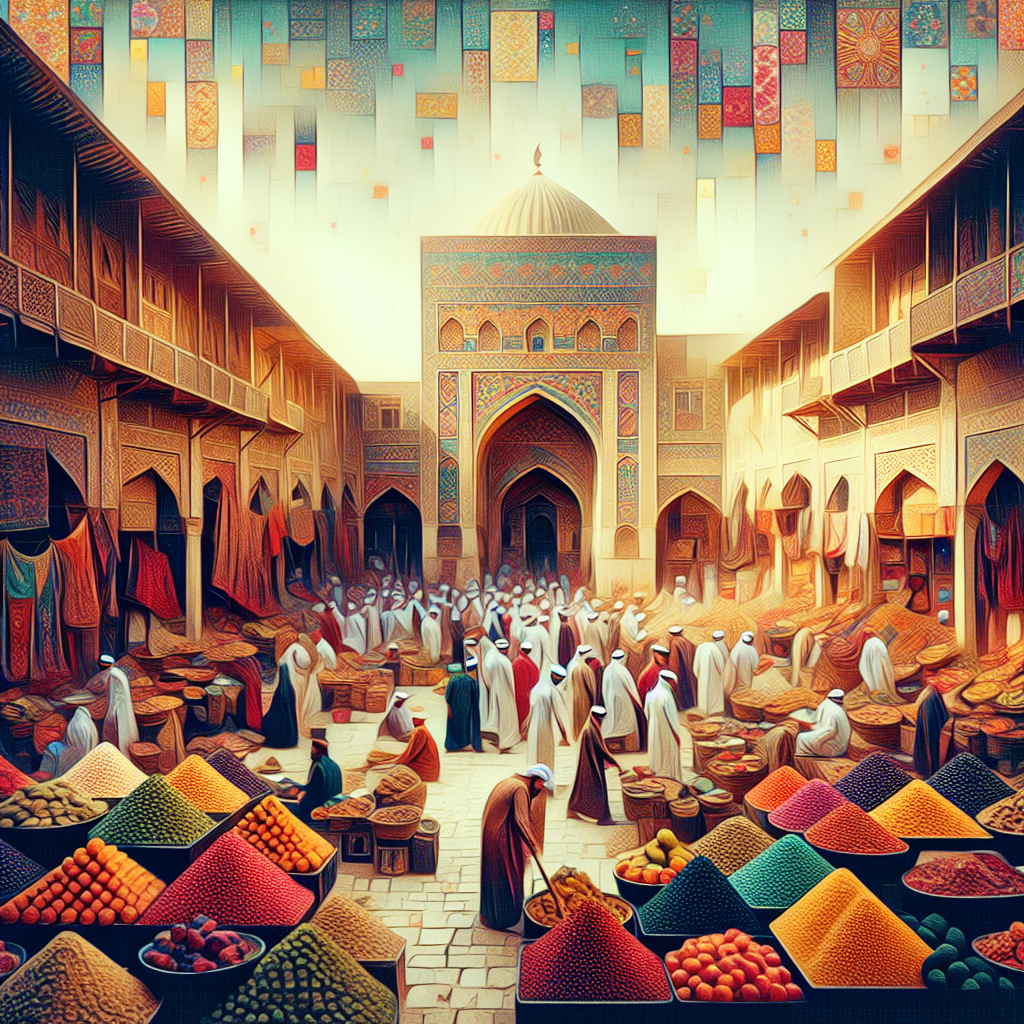Stepping through the veils of time into the bustling streets of Baghdad in the 760s CE, one finds themselves at the heart of the Abbasid Caliphate during its Golden Age, a beacon of culture, intellect, and commerce. The journey through this historical metropolis reveals strands that seem strikingly similar to modern life and others that are distinctly a product of the time.
Context: Baghdad in the 760s CE
In the eighth century, Baghdad emerged as the capital of an empire stretching from North Africa to Central Asia. The city’s design was revolutionary—a perfect circle with protective walls and gates pointing in each cardinal direction. At its center stood the Caliph’s palace and the Grand Mosque, symbolizing a united spiritual and temporal authority. This architectural marvel is well-documented in “Cities of the Middle East and North Africa: A Historical Encyclopedia,” highlighting its unique layout that served as both a practical fortress and an emblematic representation of cosmic order.


Sensory Adventures in Markets
Wandering through Baghdad’s markets, or souks, one’s senses are inundated with an array of colors, scents, and flavors. The air is perfumed with spices while stalls overflow with exotic fruits, rich fabrics, and diverse crafts. These markets are not just centers for trade but also social hubs where people from different cultures converge. Medieval texts like “Kitab al-Tabikh” provide evidence of this culinary diversity, detailing recipes that included ingredients from across the known world. The act of sharing food has always been a cornerstone of community life—a tradition that continues through centuries.


Engaging with Intellectual and Artful Entertainment
The intellectual life in Baghdad would capture your curiosity as much today. Renowned institutions like the House of Wisdom invited scholars to engage in study and debate on various sciences and philosophies—an experience akin to attending a prestigious university or conference today. Poetry was highly esteemed; works by poets such as Abu Nuwas were celebrated for their eloquence and wit. According to “The House of Wisdom: How the Arabs Transformed Western Civilization,” these gatherings were not only educational but also entertaining—a sign of Baghdad’s vibrant cultural scene.
Fashion and Identity Through Time
Exploring historical fashion reveals much about identity across different eras. In 760s Baghdad, clothing made from cotton, wool, or silk indicated one’s social status—similar to how designer labels function today. Textile fragments found at archaeological sites confirm these materials’ widespread use during that period while literary references describe their styles vividly.
Journeys through time reveal that despite centuries separating us from 760s CE Baghdad, human experiences like enjoying diverse cuisines or engaging in entertainment remain universal constants that bridge our past with present realities. Yet significant differences—in urban planning, social hierarchy, and legal systems—underscore how culture and history shape daily life. These glimpses into another era remind us of the richness of our collective human heritage, inviting us to appreciate how far we have come while acknowledging the intricate complexities of our shared history.
References:
- Kennedy, Hugh. “When Baghdad Ruled the Muslim World: The Rise and Fall of Islam’s Greatest Dynasty.”
- Hourani, Albert. “A History of the Arab Peoples.”
- Lyons, Jonathan. “The House of Wisdom: How the Arabs Transformed Western Civilization.”
- Lindsay, James E. “Daily Life in the Medieval Islamic World.”
- Raymond, André. “Baghdad: The City in Verse.”
- Savage-Smith, Emilie. “Islamicate Celestial Globes: Their History, Construction, and Use.”
- Dumper, Michael, and Stanley, Bruce E. “Cities of the Middle East and North Africa: A Historical Encyclopedia.”
- Steele, Valerie. “Encyclopedia of Clothing and Fashion.”
- Zaouali, Lilia. “Medieval Cuisine of the Islamic World: A Concise History with 174 Recipes.”
- Hassan, Hassan “The Art and Architecture of Islamic Cairo.”

